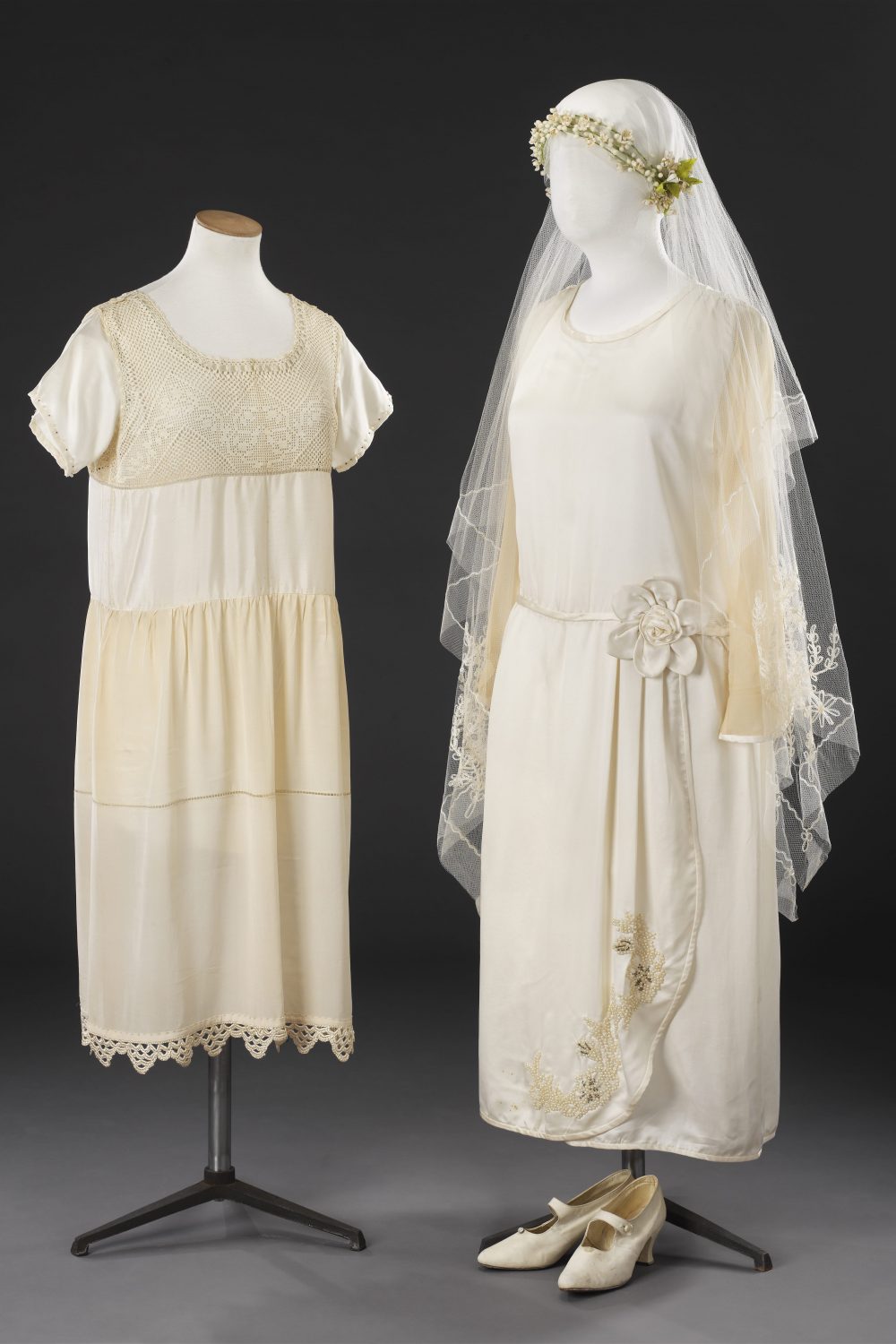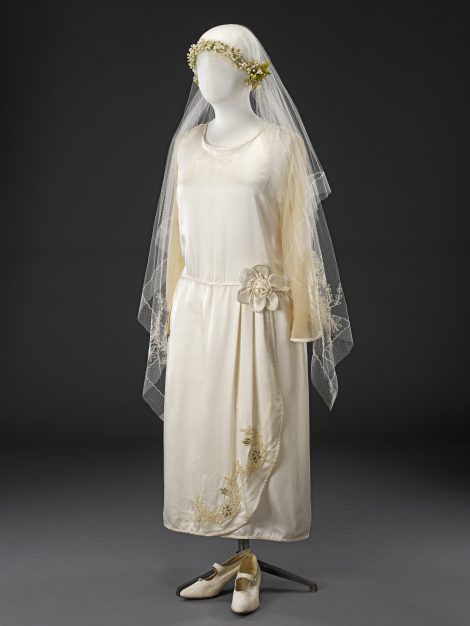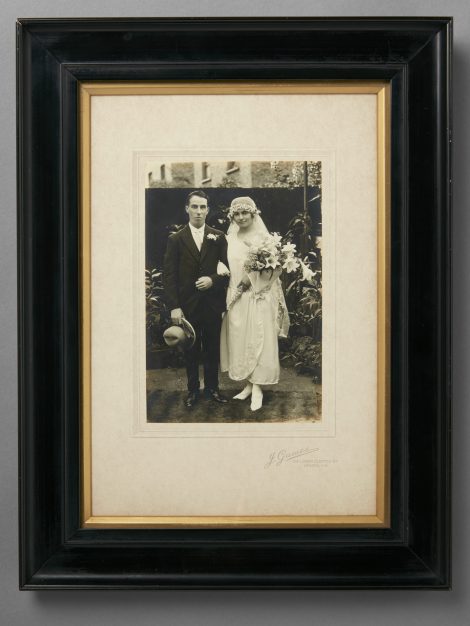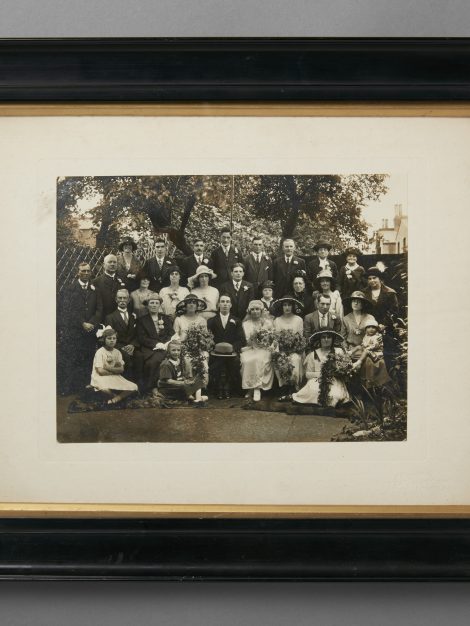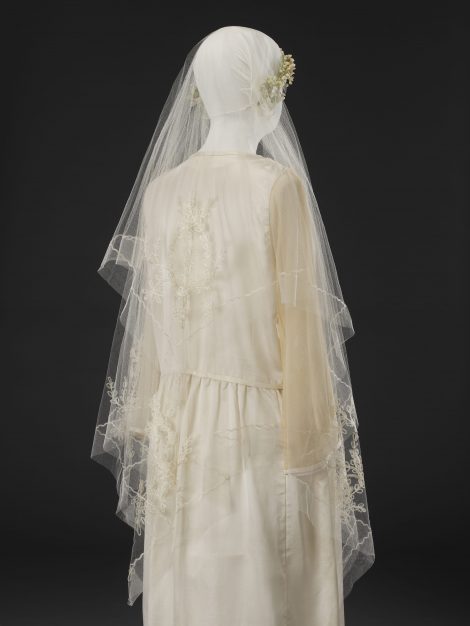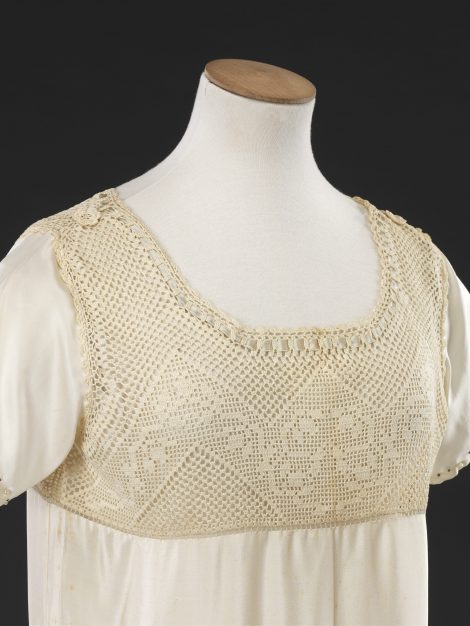The John Bright Collection owns a number of 19th and 20th Century wedding garments, several of which are included on this website. Wedding dresses, veils and waistcoats survive for sentimental reasons, stored away without having been worn again, although some of our examples have been remodelled for later generations.
This 1920s bridal outfit is the most complete in our collection, comprising the dress, underdress, veil, head-dress, shoes and two framed photographs. The only important omission is its provenance. Its anonymity adds a touching aspect to the outfit which has been beautifully made, possibly by a member of the bride’s family, and kept together with great care (see Additional Images).
The dress follows the fashionable contemporary line with its loose, low-waisted bodice, skirt to just above the ankles, and translucent sleeves that were considered ‘oriental’. The body of the dress is of lightweight cream satin with chiffon sleeves, all the edges being bound, and the curved overlapping front edge of the skirt is densely embroidered with imitation pearls and small metallic beads. A handmade flower marks the top of this opening.
The crepe de chine petticoat, or underdress, is a particular labour of love given that it was a largely unseen part of the outfit. It has a crocheted cotton yoke, the neckline threaded through with faded ‘something blue’ ribbon, and a scalloped crocheted hem with french knots above, its short satin sleeves edged in ‘pearls’ and beads would have been just visible below the chiffon sleeves of the dress. The embroidered net veil was kept in place by the traditional wax orange blossom head-dress worn fashionably low on the head, its original box marked ‘Bridal Wreath 1/6 ½‘ by hand with a printed label ‘ Made in Czechoslovakia’. The cream kid shoes in their box are stamped with their size but no maker.
The two framed photographs seem to have been displayed on the walls of the family home. One shows the bride, who carries a bouquet of lilies and gypsophila, and the groom dressed in a dark lounge suit with a light coloured homburg hat and gloves. This was a common alternative to the formal morning dress and top hats worn at society weddings. In the second photograph the whole wedding party is seated in the back garden of a Victorian terraced house, spanning the generations from the baby seated on its mother’s lap to the elderly lady in the row above the bride. The men are in dark lounge suits with a variety of collar styles reflecting their ages. The little girl on the left wears a dress hand knitted in a shetland lace stitch, and several women wear knitted and crocheted garments suggesting that this is indeed a family of skilled and enthusiastic needlewomen. Three adult bridesmaids in dark broad-brimmed hats carry bouquets of roses and gypsophila, and close examination shows that their dresses echo that of the bride with beaded edging and with just discernible scalloped petticoat hems beneath.
Although we know nothing of the bride and groom, the photographer can be identified from the mounts as ‘J. Games, 64, Lower Clapton Rd, London N. E.’ Joseph Games had fled Latvia, anglising his surname from Gamse, and becoming naturalised in January 1925. His son Abram Games was later a successful graphic artist, best known for his Festival of Britain symbol of 1951.
